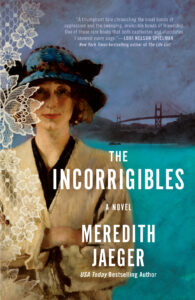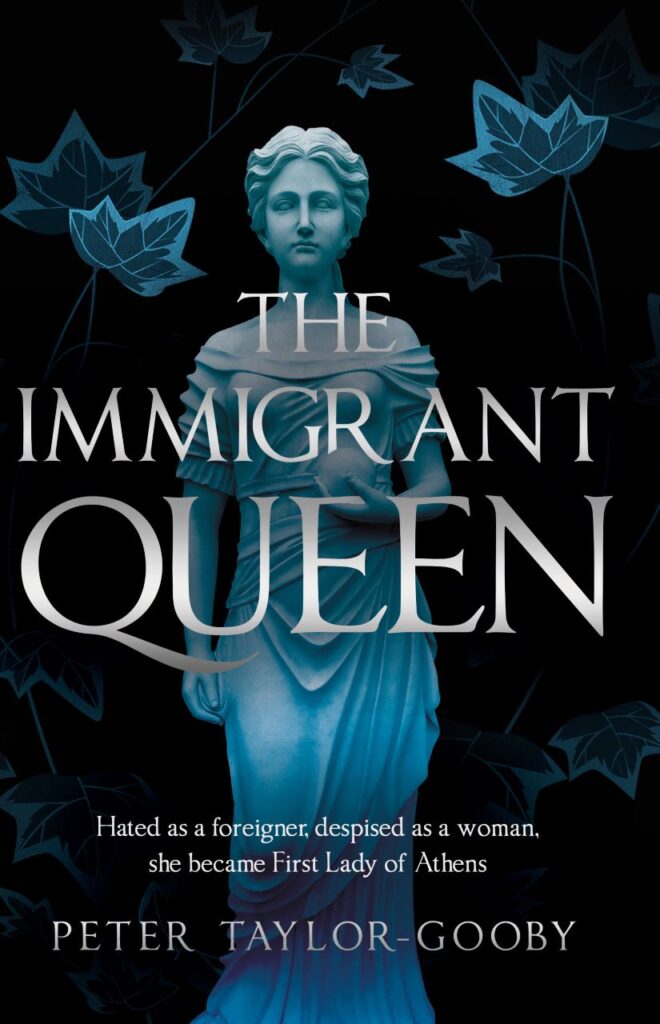Exploring San Francisco’s Forgotten Past through Two Women: The Incorrigibles by Meredith Jaeger
 BY CYNTHIA ANDERSON
BY CYNTHIA ANDERSON
Meredith Jaeger’s fourth novel, The Incorrigibles (Dutton, May 2024), connects the lives of two women in San Francisco, separated by a hundred years. She explains the inspiration for her book: “I love cities that hold layers of history and the idea of women saving each other across time. I’m a San Francisco Bay Area native, and while working in ‘SoMa’, or South of Market, during the tech boom, I wanted to write about the people who lived there long before Twitter, Salesforce and Uber.”
Her two female protagonists are richly drawn. Annie, an Irish maid determined to become upwardly mobile, lives in South of Market Street in the 1890s, and Judy, a photographer in the 1970s, struggles to find herself as she leaves an abusive marriage.
“I’m the daughter of an immigrant,” Jaeger says, “when I discovered that South of Market Street was once a working-class Irish neighborhood, I wanted to tell the story of an Irish maid during that time. Then I came across Janet Delaney’s ‘South of Market’ photographs, which document the neighborhood’s first wave of gentrification in the 1970s, which fascinated me. Before urban renewal, SoMa looked much the same as it had a hundred years ago. That’s how I came up with a story about an Irish maid and a 1970s photographer who discovers her mugshot eighty years later.”
Weaving Judy and Annie’s stories together, Jaeger reveals San Francisco’s forgotten past. “If you slow down,” she says, “its vestiges are still there—hidden train tracks, faded advertisements, and a squat blacksmith’s shop in the shadow of a glass skyscraper, still standing more than a hundred years later.”
Historical research is Jaeger’s favorite part of the writing process. Some of the novel takes place in San Quentin Prison. Jaeger found that the little information available at the San Quentin Prison Museum mostly sensationalized the lives of the early female prisoners rather than telling their stories. But she didn’t let that deter her, and she turned to other sources for material to bring her characters to life.
“At the Marin History Museum, I looked through a prison register from 1889 containing names of the women incarcerated in San Quentin, along with their crimes and sentences. I loved reading through the Turn-key’s daily log from the 1870s, documenting daily life and weather conditions at the prison. A photo album containing prison photographs from the 1890s allowed me to see what the women’s ward looked like, along with other prison buildings. Another invaluable source of information was the California Digital Newspaper Collection, where I read 1890s newspaper articles about the shocking prison scandals. At the UC Berkeley Bancroft library, I looked through 19th century San Quentin Prison records, with letters addressed to the governor, recommending prisoners for commutations and pardons.”

author photo by jennheflinphoto
One of the novel’s themes is female agency and how women in the past, like today, struggled to lead fulfilling lives. “When women are financially dependent on men and not given any choice in family planning, it limits what they can accomplish. Lack of financial independence can also put women in dangerous situations, such as being unable to leave an abusive relationship. Pregnancies can have dangerous consequences, including death, and this was important for me to write about.”
In the novel, Annie learns the craft of Irish lace, one of the few avenues providing poor women a means to independence. “Researching what life in Ireland was like in the late 1800s, I learned about Irish crochet lace as a means of survival. Lace was worn by the wealthiest women in Europe but produced by the poorest women in Ireland. They didn’t require anything to make it other than thread and a hook (and a lot of patience!), so even women in rural towns could support their families. This was especially important during the potato famine when Irish lace saved women from starvation or enabled them to emigrate. Several lace-making schools were established throughout Ireland, and different parts of the country produced distinct types of lace.”
Jaeger says she watched YouTube tutorials on making Irish crochet lace, in which motifs of leaves and flowers are delicately joined together with stitches. She also visited Laci’s Museum of Lace & Textiles in Berkeley, which has beautiful examples of Irish crochet lace from the late 1800s.
Another issue the novel touches on is affordable housing. It plagued San Francisco in the 1890s and the 1970s and still resonates today. Jaeger says that a lack of affordable housing is one of the reasons she wanted to write this novel. “I have been priced out of the city where I was born and raised. The tech industry’s growth has significantly impacted the lack of affordable housing in the Bay Area, sending rents skyrocketing, but the problem began long before.”
She explains, “Beginning in the 1950s, the San Francisco Redevelopment Agency used federal funds to clear ‘blighted’ communities, which were low-income and communities of color. By the early 1970s, over six thousand affordable housing units were lost. Now, San Francisco and its surrounding areas are experiencing a serious housing shortage. The Bay Area is a special place with a vibrant culture, but we’re in danger of losing it if we can’t support artists, working families, and the diverse groups of people who deserve to live here and thrive.”
About the contributor: Cynthia Anderson is a writer living in Switzerland. She’s written The Pilot’s Watch, a novel about WW2 Switzerland. You can connect with her on Instagram at cynandersonwriter.






